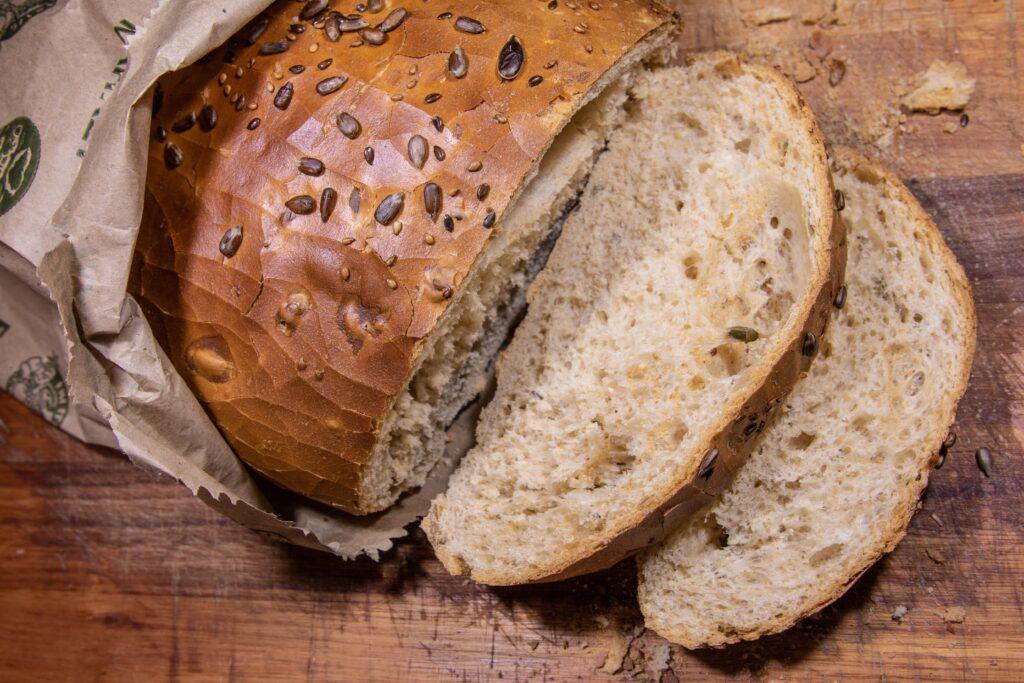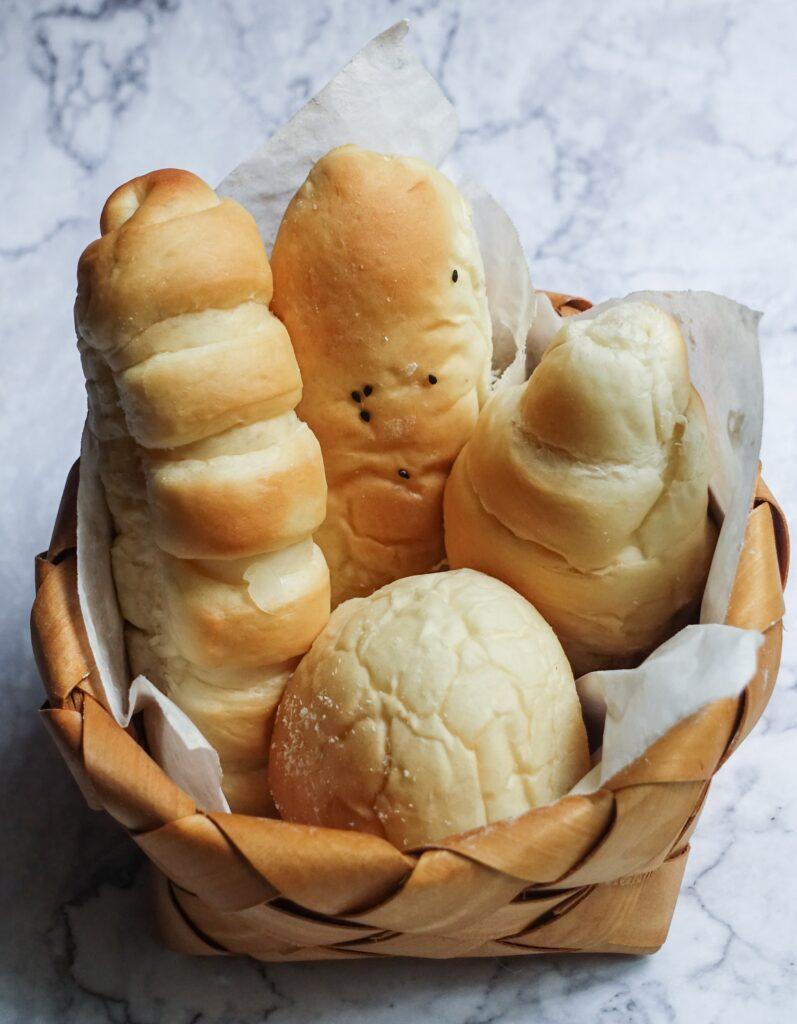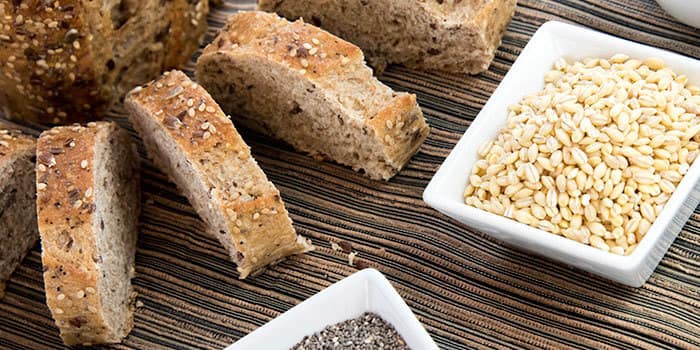15 Tips on How to Stay on a Low-Carb Diet
How to Stay on a Low-Carbohydrate Diet

So you’ve finally started out on your low-carb journey. But how do you stay there for good to keep with your health and fitness goals? Don’t you just miss that fresh bread a dinner or your favorite puttanesca pasta? Starting out is one thing, but actually staying on a low-carb lifestyle is a challenge that many have to face. No matter how much you want to stay in shape, it is hard to kick that high-carb habit that you have gotten so used to over the years. There’s no going back though, especially when you already have shed some pounds off and want to stay fit. The strategy then is to be able to unlearn those old habits and replace them with new ones that are more in tune with your current goals. The trick is to build on a new lifestyle in a step by step process which will wean you off those high-carb undesirables for good. Needless to say, determination is key at this point.
So what does it take to be on a low-carb diet?
Staying on a diet plan that is low in carbohydrates involves limiting your carbohydrate intake on a daily basis. You have to be able to substitute your typical carbs consumption with their low-carb versions including fruits and vegetables. Apparently, not all fruits and veggies are created equal even if they are considered generally healthy as there are those that are high in carbohydrates in relation to your limited carbohydrate intake. At the same time, you have to be able to consume more protein and healthy fats. The low-carb diet plan can be a very effective way in achieving weight loss so it is considered by many as a worthy pursuit. Research has it that the average day to day limit is typically 20 to 57 grams of carbohydrates depending on the physical activities that you complement your diet with. Some low-carb diets require strict compliance and are done in conjunction with intermittent fasting where there are prescribed periods for consuming carbs in 24-hour periods. At the end of the day, it is best to have your diet regimen approved by your doctor or dietitian so you can proceed smoothly. Just remember that if you have already started with it, then you can certainly push yourself to continue with it. Here are helpful tips that can boost you forward:
TIP#1: Know which foods are low-carb for real
Knowing what foods are low-carb can help you identity which ones you need to keep consuming. The following are generally considered low-carb foods:
- Fish
- Lean meats
- Seafoods
- Leafy green vegetables
- Eggs
- Nuts and seeds
- Some fruits like blueberries, avocados, and strawberries
- Oils such as olive oil and coconut oil
- Unsweetened dairy products
TIP#2: Examine the carbohydrate count and serving size of the food carefully
Carbohydrates are typically measured in grams. On packaged foods, the carbohydrate content in grams can be mostly seen on the Nutrition Facts. Keeping track of your carbohydrate intake for the day can help match your activity level with how much carbs you consume. If you are consuming more carbs, then you should be doing heavy physical exercises as well to balance the equation. Accordingly, a carb consumption of 20 to 50 grams (g) per day is the recommended daily allowance to make weight loss happen. You can comply with your low-carb diet plan by checking the nutrition facts, specifically the carbs section, and choose foods with zero to the lowest carb content possible. If it is not on the label, make sure to research which foods and recipes are consistent with the low-carb regimen.
TIP #3 Make a meal plan
Making a meal plan can help make things easier for you especially when you are new at diet planning and preparing your own food. You should know by now that having food ready and within reach is what’s going to help you stay consistent with your low-carb diet plan. And so, you could start by mapping out a meal plan that is good for at least 3 days to a full week before heading to the grocery store. Making meal plans that are customized to your new way of life and food inclinations will not only help you reach your goals but it could even be the most financially savvy decision that you will ever make. There are also mobile apps that can guide you in making a plan. However, it can require a subscription so if you are saving up on money, here are six simple steps to get to that meal plan of yours. If you are a member of BODi (Beachbody On Demand) you can use The Portion Fix or 2B Mindset as it is included with your Total Solution Pack purchase.
- Reorganize your schedule
Look hard and long at your timetable and decide not just when you will have the opportunity to cook, but when you’ll have the most energy to prepare your food yourself. This way, you can ensure your success.Track down a couple of openings in your timetable, close off those times, and make a schedule for your food preparation.
- Choose your recipes
Figure out what you want to cook, and which recipes you will be going for. To stay low-carb, it is important to choose recipes that you actually like and look forward to eating. There are many low-carb versions of the recipes that you like.
- Assign the recipes to your schedule
After reviewing your schedule and choosing your recipes, assign them to your schedule on those times you’ve dedicated to cook them.
- Make a grocery list
Go through each recipe and list them down on your notes. Make sure to use recipes that are low-carb and yet simple enough for you to keep preparing. If you are too busy or not that great in the kitchen, you can go for the easy ones as well.
- Shop or have the ingredients delivered to your home.
- Cook, eat, enjoy and repeat!
 TIP #4: Prep your meals in advance
TIP #4: Prep your meals in advance
After meal planning, it is time to prepare your food ahead of time. In this way, you can store them properly and take them out as needed. What’s the purpose of the meal planning if there is no execution of the plan, right? The meal prep can help you avoid making unhealthy choices, save on time, and ultimately help you save some money. Be sure to prepare the meals ahead of time as it can be convenient and ready to go. If you do not meal prep, you are giving yourself more chances of consuming foods that are high in carbs instead of the opposite. When you are in a hurry, the tendency is to grab anything that’s in front of you, prepare instant foods, or order fast food – all of which are going to be high-carb more than ever. In case cooking your own food is not something that you can do, you can have someone prep your meals or you can subscribe to a service that prepares low-carb meals.
TIP #5: Bring low-carbs snacks with you
For the newbies in the realm of low-carb diets, it is normal for the body to experience a state of hypoglycemia. Hypoglycemia can happen as a result of the carb restriction while the body is adjusting to the change. Because of this, it would be to your advantage if you bring low-carb snacks with you like unsweetened chocolates, hard-boiled eggs, walnuts, low-carb yogurt, or cheese. Check on the carb content of these snacks and have them handy when needed.
TIP#6: Have low-carb, unsweetened fruit juices ready
Having fruit juices can also be considered as a smart option as long as the fruit is low in carbohydrates like blackberries, peaches, kiwi, avocado, watermelon, strawberries, and raspberries. Instead of having the whole piece of fruit, you can make it into a fruit drink or smoothie minus the sugar and other ingredients that you usually put in that are rich in carbohydrates. So no, don’t put chocolate bits, syrup, or ice cream on top of your smoothie unless they are certified low-carb.
TIP #7: Check out the alternatives
One thing that can help you become successful with your low-carb diet plan is when you are able to substitute high carb foods, drinks, and ingredients with their low-carb versions. For instance, you can try can try lettuce instead of the usual taco shells or almond flour instead of white flour. Think eggplant lasagna, zucchini pasta, spaghetti squash, and so on and so forth. When you are able to make them as yummy as their high-carb versions, there is no reason you cannot keep to your low-carb diet. You can research for the low-carb alternatives to your favorite foods, desserts, and drinks. At your favorite café, you can even have your organic coffee customized so it can remain low in carbohydrates by using heavy cream and stevia in place of the usual sugar.
TIP #8: Let exercise help you
It is best to combine exercise with your low-carb diet to achieve maximum results. After you exercise or workout, you will be more inclined to eat less carbs so your efforts do not get wasted and in turn, this becomes really good motivation on your end. You have to be careful not to do strenuous activities though as this might increase your appetite for more carbs to fuel your body. Choose physical activities that are enough to help you burn the calories but will not suck up your energy too much.
TIP #9: Focus on foods packed with protein
Protein has been proven to help with satiety and for you, it means feeling fuller for longer so you do not crave for some extra carbs satisfaction. While carbs make you crave for more carbs, protein can get you through the day not needing or wanting more of it. Focus on foods that are rich in protein and it can really help you with your low-carb goals. High protein foods can also give you the extra benefit of losing weight, staving off cravings, and boosting your metabolic rate for a short period of time.
TIP #10: Incorporate eggs into your meals for the day
You know about eggs as a breakfast staple but when you are in a low-carb diet, eggs can become your go-to food at any time of the day or night. Eggs are packed with protein and can definitely make you feel hungry longer and help you tone down those carb cravings. They contain only 0.6 grams of carbohydrates, 5 grams fat, and 7 grams protein. They are also an ideal substitute if you want to cut back on your carbs. If you are used to pairing rice with your meals, go for eggs instead.
There are many ways to cook your eggs so they do not become passé. Salt and pepper are typical seasonings but you can also experiment with garlic powder or red pepper flakes. Coconut oil is great to use when cooking eggs the low-carb way. Full-fat sour cream is another good idea or try topping them with mozzarella, Parmesan, or cheddar cheese for that extra kick. For yummier but low-carb scrambled eggs, you can mix diced ham or bacon bits in there too.
TIP #11: Avoid sugar and use sugar alternatives instead
Sugar can creep up anyplace and can be found in everything from low-fat dairy items to salad dressings, and even in fruits and veggies. There’s no need to give up the sweetness though when on a low-carb diet because there healthy alternatives that you can replace sugar with. Instead of using sugar, you can use sugar free alternatives, such as stevia, monkfruit and xylitol. They will sweeten your coffee, breads, or desserts without adding to your carb consumption for the day. If you are not a kitchen person, there are lots of low-carb food products in the market as well as specialty shops or restaurants serving low-carb versions of your favorite meals and drinks.
TIP #12: Look out for carbs when eating out
Speaking of restaurants, eating out can pose the most challenge for you when staying low-carb. The world around you is a carbohydrate-rich loving environment that you yourself have been a part of. When eating alone, you can probably be more conscious about what you order but when seeing family or friends, you would want to just go with the flow and enjoy the moment. As such, it is best to minimize eating out if you’re the sanguine personality type who can’t resist a carb-loaded meal. When in groups, you can opt to bring your diet food with you to stay consistent or look up for choices with the least carbohydrates in them like garden salads, chicken, and meats. It helps to inform people about your diet regimen so they can support you when you have meals together.
TIP #13: Weigh the health risks and benefits
It is important to know the health risks and benefits before starting a low-carb diet. As mentioned earlier, it is recommended that you consult a doctor to be on the safe side. There are health risks involved in shifting to a low-carb regimen and while they are considered temporary side effects, the same effects can differ from one body to the next depending on your physical make up and current condition. These effects can include constipation, muscle cramps, headache, and fatigue, among others. On the other hand, the benefits of low-carb diet have to do with weight loss, lower risks of heart disease and diabetes, and an improvement in your cholesterol and blood sugar levels, to name a few. Have yourself assessed by a specialist so you can see if the benefits outweigh the risks and side effects in the long run.
 TIP #14: Hydrate, hydrate, hydrate!
TIP #14: Hydrate, hydrate, hydrate!
Drinking water is a healthy habit to keep especially when you are going low on your carb consumption. Restricting carbohydrates from your diet can lead to dehydration due to the loss of nutrients, electrolytes, and water in the body. As such, the importance of staying hydrated at this time cannot be overemphasized. Remember as a kid when you were asked to drink at least 8 glasses of water a day? Well, as an adult pursuing the low-carb lifestyle drinking water should be done more often. To spice things up and make drinking water more tolerable, you can add some slices of lemon or cucumber in there. Also, check out some low-carb electrolyte drinks in the grocery if you are not feeling well as it could mean you need to replenish your electrolytes as soon as possible.
TIP #15: Explore carbohydrates cycling
Carbs cycling is a dietary methodology where you substitute carb consumption on a day to day, week after week, or month to month premise. Carb cycling entails consuming extremely low-carb to zero-carb food varieties for a set number of days and then following it up with some much-awaited high-carb feasts. So you go back and forth doing low-carb days then high-carb days. You go high-carb when you need to fuel your workout days and go low-carb during rest days. You might think that carb cycling is ideal for those who cannot simply live without their favorite cake, ice cream, chocolate, and the rest of the carb-loaded processed goodies. But even on your high-carb days, it is still important to make healthy food choices so think fruits and veggies high in fiber, low-fat dairy products, legumes, and whole grains. Needless to say, you can use this approach to lose weight and maintain physical performance at the same time.








